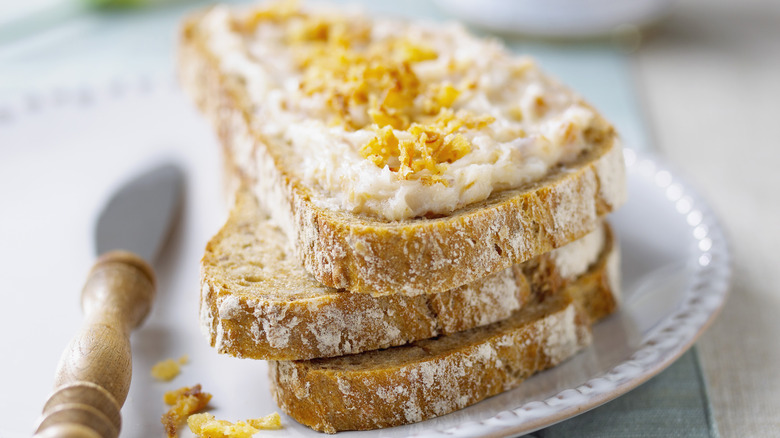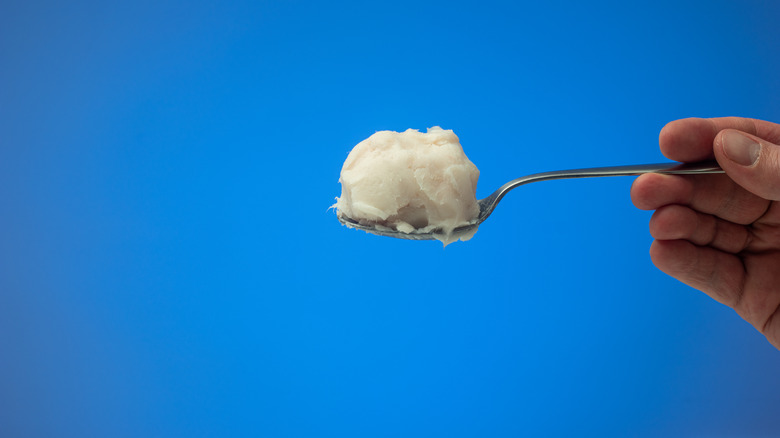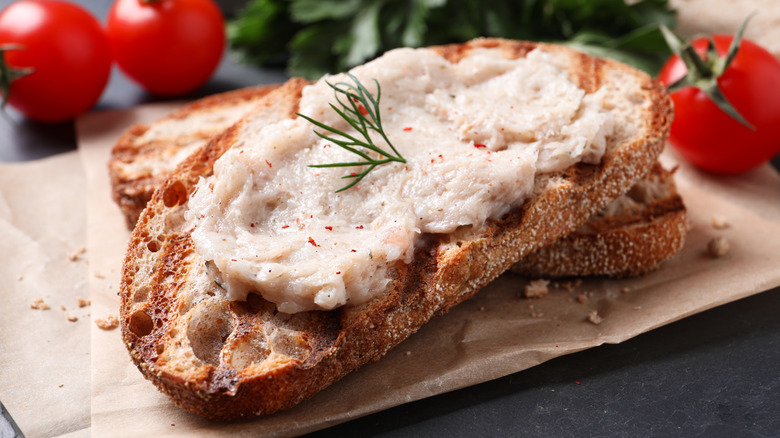What Is Dripping And How Did It Become England's Go-To Ingredient?
It's no secret that British cuisine has gotten a bad rap over the years. Global criticism has focused on everything from claims of poor flavor and drab appearances to bizarre dish names. In the modern era, these stereotypes seem to plague the nation's cooking, but it wasn't always that way.
Centuries ago, during the Medieval period, British food was highly regarded across the globe, and, up until World War II, was accustomed to rave reviews. However, strict rationing, bad-mouthing by American soldiers, and a post-war preoccupation with other cuisines rather became daggers in the heart of Britain's culinary reputation (per Manchester's Finest). However, all the disparaging doesn't mean that Britain is completely void of good food.
Certain classic British dishes, like fish and chips and full English breakfasts, have definitely made names for themselves and been able to travel around the world. While these staple dishes may draw in tourists off the street, dripping is a traditional and beloved dish that isn't found as often outside U.K. households. While it may fall in line with certain common stereotypes, such as having a dull appearance, dripping has a nostalgic place in the hearts of many. It was once even so popular that it caused riots.
What is dripping?
If you're familiar with schmaltz – repurposed chicken fat found commonly in Eastern European and Jewish dishes — then consider dripping its culinary cousin. Dripping, never written as drippings, is a fat rendered from beef. Specifically, according to Grandad's Cookbook, it is the rendered-down fat from a cow's organs. The site notes that, rather than just containing pure white fat, it also often includes "bits and pieces of other tissue which separate out and form a layer of jelly beneath the fat which floats to the top."
Dripping is not to be confused with lard. Lard is rendered pig fat and is usually a bit creamier and whiter than dripping. Since dripping often includes bits of brown jelly, it can turn into a more tan color, as the jelly and white fat are mixed together. However, it can also come in a purer white form. Many households gather the fat from their Sunday roasts to keep and either eat on toast or use for cooking, per Historic UK.
History of dripping
According to Taste, dripping has been around as long as British folks have been roasting meats, making it a centuries-old food. Changes in cooking methods made it more of a working-class food in the 20th century, but prior to that, it was pretty prestigious. In 1865, a riot in Leeds clearly demonstrated how the wealth disparity in the city could turn violent, all for a couple of pounds of dripping.
According to Historic UK, in 1865 a cook named Eliza Stafford took less than a kilogram of dripping from her employer Henry Chorley's residence with the intention of selling it. At the time, this would have been a very profitable deal for a working-class woman. However, when Chorley discovered this, he insisted she be punished. While Stafford maintained innocence and claimed she had a right to take the fat, Chorley arranged for a hearing. On the accusation of this theft and others, Stafford was sent to jail for a month.
However, Stafford garnered a lot of support among the rest of the working class. Protests broke out for weeks, and people hung signs showing their support for the cook. On the final day of Stafford's sentence, a violent mob gathered outside Chorley's residence. They threw stones at him, and eventually, the police arrived. This only angered the mob, and more stones were thrown and chaos ensued. At least one person died as a result of the violence.
How dripping is made and eaten
According to Butcher Magazine, the raw white fat layer is sliced right off of a cow carcass to begin making dripping. The fat comes especially from the kidney area, according to the magazine. It's then sliced up into very small pieces to aid in the melting process. The fat is melted down for a few hours, and it comes out with both liquid and solid pieces. The liquid will be strained to remove the jelly pieces, then poured into small cups and left to solidify.
Once the fat is solidified, it turns into a creamy white paste. While many people just use this for cooking, it's great to eat as well. Butcher Magazine recommends dipping fries into the fat or coating roasted potatoes with it. Even the famed Yorkshire pudding is commonly served with beef dripping or gravy on the side, per Serious Eats.
However, likely the most common way to eat dripping is slathered on toast. The creamy spread pairs nicely with a bit of salt on the crunchy bread. And according to Grandad's Cookbook, spreading just the brown jelly portion of the dripping will yield a dish called "a mucky sandwich" — a name that lends some additional clarity to how British food got such a bad reputation.



